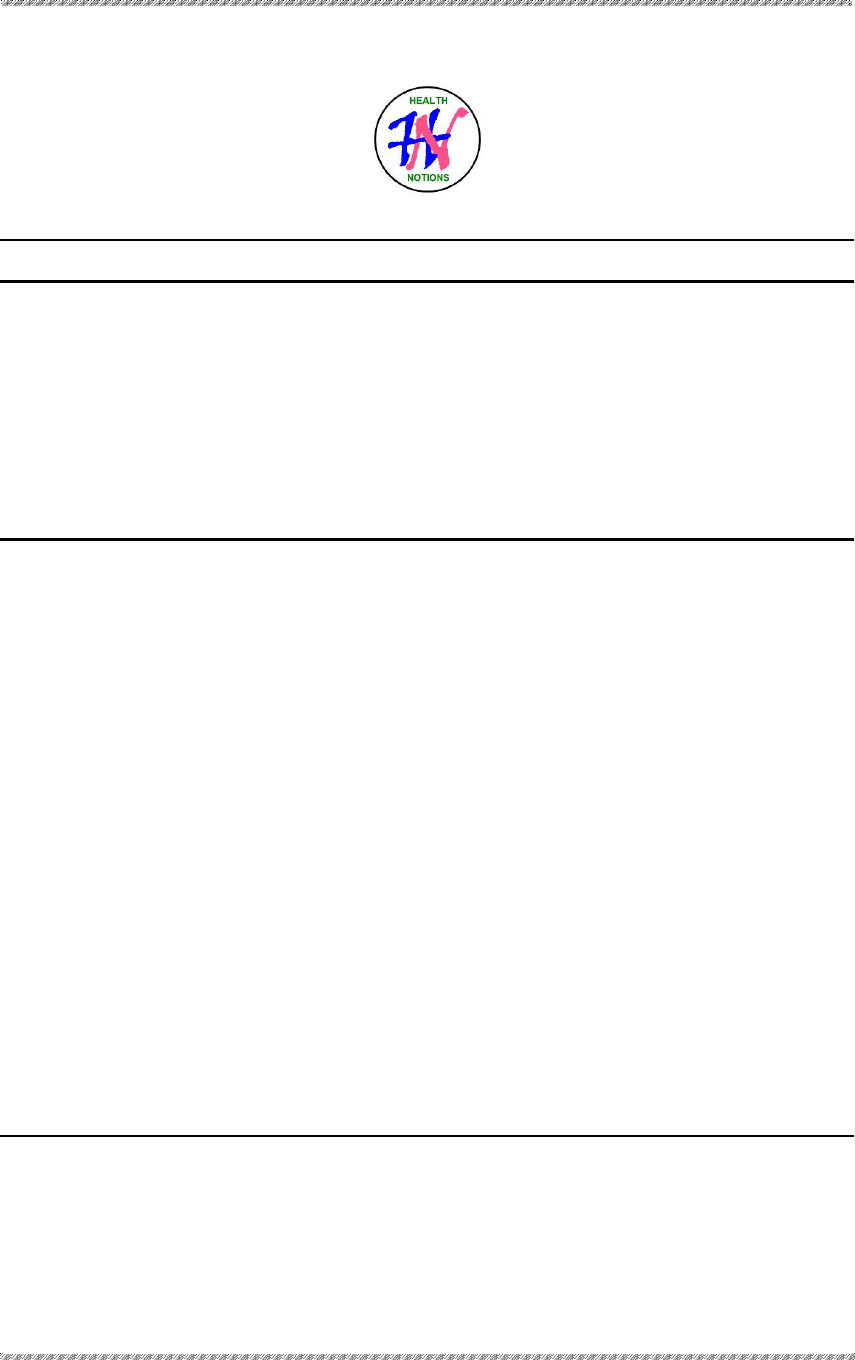
Health Notions, Volume 5 Number 8 (August 2021) ISSN 2580-4936
275 | Publisher: Humanistic Network for Science and Technology
DOI: http://dx.doi.org/10.33846/hn50803
http://heanoti.com/index.php/hn
RESEARCH ARTICLE
URL of this article: http://heanoti.com/index.php/hn/article/view/hn50803
Assessment on the Programs and Implementation of Health Services in the University
Edmelyn B. Cacayan
1(CA)
, Angelito B. Alvarado
2
, Kennedy M. Pelico
3
, Ruby Joy Matias
4,
Trisha Mae B.
Ocampo
5
, Rushel F. Samut
6
, Maureen May B. Pascual
7
1(CA)
Dean, Isabela State University, College of Nursing, Echague, Isabela, Philippines,
kenedypelico15@gmail.com (Corresponding Author)
2
Research Coordinator, Isabela State University, College of Nursing, Echague, Isabela, Philippines,
angelito.e.alvarado@isu.edu.ph
3
Nursing Student, Isabela State University, College of Nursing, Echague, Isabela, Philippines, kenedypelico15@gmail.com
4
Nursing Student, Isabela State University, College of Nursing, Echague, Isabela, Philippines, rubyjoymatias@gmail.com
5
Nursing Student, Isabela State University, College of Nursing, Echague, Isabela, Philippines, ocampotrizha@gmail.com
6
Nursing Student, Isabela State University, College of Nursing, Echague, Isabela, Philippines, rushelle.samut@gmail.com
7
Nursing Student, Isabela State University, College of Nursing, Echague, Isabela, Philippines, pmaumau9@gmail.com
ABSTRACT
The highly provision of good and quality health care services is indeed a highly difficult challenge to take. The density
of implementation of health service entails a mass involvement to alleviate the development it needs to sustain quality
and effectivity to various phenomenal issues or situations. However, to coagulate a health care services it needs some
improvements especially that the situation is being modernize and develop by various innovations and researches that
therefore be inoculated to the system and be applied to the environment for better implementation and utilization.
Nevertheless, the catalytic changes would be much better need today’s situations and that would be input thru
comprehensively decisions and assessments. This study aimed to assess the programs and health services, and
implementation of health services in terms of accessibility, provider, and quality of the University Health Services.
Qualitative descriptive survey was conducted on 111 respondents to assess the level of attainment on the programs and
health services, and level of satisfaction on the implementation of health services in terms of accessibility, provider and
quality. For the respondent probability sampling and purposive sampling were used in because not all the population
will be the respondents. Data were collected and analysed by frequency count and weighted mean. The result were the
programs and health services were marked as attained which being rated by the respondents, while in terms of the
dimension variable it is enlightening that the satisfaction level on the accessibility, provider and quality of health services
marked as satisfy as evidence on the average weighted mean. The study concluded that in order to fully attain the
programs and health services it needs to be intensify comprehensively and more strengthen regarding on the
implementation of the health services and its programs. The action would augment the effectiveness of the health
programs by putting it into more comprehensive health services and programs for long term implementation. Moreover,
it will guarantee the health of the university at the same time to the faculty and staff including the students within the
university. The dimension variable of satisfaction level on the accessibility, provider and quality of health services
marked as satisfy as evidence on the average weighted mean. The implication is that health services and programs needs
to heighten and be more utilize in the university exclusively to the individual to attain its optimum satisfaction level.
Moreover, to alleviate the access to quality care and strengthen health care provider’s ability to plan, coordinate and
manage services. This intervention would sustain its functionality and purpose for continuum of care.
Keywords: assessment; programs; implementation; health services; satisfaction
INTRODUCTION
Background
Reliability, efficiency and sustainability of health care process enables achieving the goal of improving
health care delivery and enhancing patient outcomes. The Philippines population is rapidly growing because of
increasing birth rate every year. The strain of the economy and industry is additionally increasing, moreover,
voluminous people also are in demand of health care services with the presence of various diseases which is very
rampant nowadays.
(1)
As per Manila Times, within the last 20 years the Philippine health care system has experienced dramatic
changes for by the government has instituted various reforms and policies in order to implement easy accessibility

Health Notions, Volume 5 Number 8 (August 2021) ISSN 2580-4936
276 | Publisher: Humanistic Network for Science and Technology
to health benefits for every Filipino. Additionally, the government continues to progress towards developing a
universal health care system ensuring the accessibility for all sorts of procedure for all the Filipinos.
Health could be a basic right guaranteed by the Philippine Constitution of 1987
(2)
. That provided the
Philippines with dual health delivery system composed of the public sector and private sector. The government shall
provide medical care, including preventive and promotive health services and other public health programs. The
administration should aim to produce financial risk protection for the Filipino people.
In addition,
(3)
monitoring and improving the qualities of health care be observed as key component in
achieving feedback.
(4)
Patient satisfaction is the most actors in appraising and assessing the standard. It is a big
parameter for judging the standard of service being provided by a service provider to the client. Moreover, it
also observed because the determinant of the viability and sustainability of healthcare services, effective, use of
healthcare resources, likelihood of continuously using health care services leading to better outcomes.
The Department of Health (DOH)
(5)
provides national policy direction and strategic plans, regulatory
services, standards, and guidelines for health. It also provides leadership, technical assistance, capacity building,
linkages and coordination with other national government agencies, Local Government Units (LGU’s) and
personal entities in implementing health policies.
Under the enactment of the regime Code of 1991
(6)
, LGU’s were fully granted autonomy and responsibility
for managing and implementing their own health programs and services, with the DOH providing technical
support. This consists of hospitals, barangay health stations, health units and health centers, including the private
sectors which are the clinics, infirmaries, laboratories, pharmaceuticals, health companies, academic and research
institutions.
Furthermore, under Commission on Higher Education (CHED) Memorandum Order No. 21 Series of 2000
and Memorandum order No. 09 Series of 2013
(7)
, which stipulate that student health services be included among
the Scholar Welfare Programs and Services of HEI’s. Guidelines which apply to both public and private Higher
Education Institution. It is stated in Section 27, Health services refers to the supply of primary healthcare and
wellness program. In Section 27.1, the Upper Education Institute shall provide primary health-care services
administered by licensed medical, dental, and allied professionals to any or all student. In Section 27.2, there shall
be adequate facilities for health care and updated health records, including disability records for college kids with
disabilities that are kept and maintained as required by the Department of Health and Other Related agencies. In
Section 27. 3, there shall be mechanisms to push a healthy lifestyle like, but not limited to, healthy diet, physical
activities, and no smoking and drinking of alcoholic beverages and misuse, and to produce a healthy environment
not only inside the campus but also outside the college premises. And under Section 27.4, the varsity shall provide
policies, and an environment which will enable the practice of healthy lifestyle.
The University is one among the Higher Education Institutions within the Philippines, composed of
thousands of student and employees. As matter of fact, the University is one of the most important within the
province. And one among the Universities which features a functional university clinic or infirmary being manned
by health personnel and other allied professionals.
The highly provision of good and quality health care services is indeed a highly difficult challenge to take.
The density of implementation of health service requires a mass involvement to alleviate the development it needs
to sustain quality and effectivity to various phenomenal issues or situations. However, to coagulate a health care
services it needs some improvements especially that the situation is being modernize and develop by various
innovations and researches that therefore be inoculated to the system and be applied to the environment for better
implementation and utilization. Furthermore, the improvement that could take would make progress and
difference from what it is being utilize from current to future happenings. Nevertheless, the catalytic changes
would be much better need today’s situations and that would be input thru comprehensively decisions and
assessments.
Hence, the researchers were driven to assess the programs and implementation of the health services
delivered by the University, the way it is attained and utilized by the employees and staff of the University, and
also to assess the satisfaction of the delivery of health services being rendered by the provider and institution.
METHODS
The researchers utilized a descriptive research design for the conduct of the study for it will assess the
programs and health services of the University, moreover, on the perceived client’s satisfaction using the three
dimension: accessibility, provider, and quality of the implementation of the health services.
The respondent who participated in this study were 111 faculty and staff of the University from different
colleges.
In gathering of the data, the researchers followed these processes in the conduct of the study. The
researchers proposed a title and submitted it to the research professor after was approved. Secured a letter in the
conduct of the study and sought permission from the University Administrator for its conduct. After approval, the
researchers prepared the instrument to be used in the conduct of the study. Afterwhich, administered and retrieved

Health Notions, Volume 5 Number 8 (August 2021) ISSN 2580-4936
277 | Publisher: Humanistic Network for Science and Technology
the questionnaire from the respondents. The sampling procedure, non-probability will be used in the manner of
the selection of the respondents. After retrieval, the tabulation, analysis, and interpretation of the data followed.
Furthermore, a structured self-made questionnaire was used. The questions under the programs and health
services were collected from the University clinic/health services, while the dimension was adapt to the European
Patient’s Forum Book, Access to healthcare European Patient Forum survey-final report
(8)
. The questionnaire
checklist was designed by the researchers. It contains the following: Part I – Profile of the Respondents’, Part II
– Programs and Health Services, and Dimension of Level of Satisfaction
(9)
on the Implementation of Health
Services as to; Accessibility, Provider, and Quality.
In the data analysis and qualitative interpretation, profile variables were analyzed using frequency count
and percentage while on the dimension of the level of satisfaction weighted mean was used. A 4-point Likert
scale
(10)
was used with the corresponding qualitative description as follows:
To the level of attainment of the programs and objectives of the health services.
a) Scale 1: Not Attained (range= 1.00 – 1.75)
b) Scale 2: Partially Attained (range= 1.76 – 2.50)
c) Scale 3: Attained (range= 2.51 – 3.25)
d) Scale 4: Fully Attained (range= 3.26 – 4.00)
To the level of satisfaction on the implementation of health services.
a) Scale 1: Not at All Satisfied (range= 1.00 – 1.75)
b) Scale 2: Not Too Satisfied (range= 1.76 – 2.50)
c) Scale 3; Somewhat Satisfied (range= 2.51 – 3.25)
d) Scale 4: Very Satisfied (range= 3.26 – 4.00)
RESULTS
This presents the analysis and interpretation of the data gathered through the use of the questionnaire in
response to the problem of this study.
Profile of Respondents
Table 1. Frequency and percentage distribution of the respondent according to sex
Sex Frequency Percentage
Male
Female
37
74
33
67
On the frequency and percentage distribution of the respondents according to sex. It shows that from the
111 respondents there are 33% or 37 males and 67% or 74 females. This represent that female is the utmost
numbered faculty and staff in the University than males.
Table 2. Frequency and percentage distribution of the respondent according to age
This shows the frequency and percentage distribution of the respondent according to age. It illustrate that
majority from the respondent age are from 20-30 years old which has 52 or 47 %, followed by the age of 31-40
years old which has 28 or 25 % and the least numbered respondents is from 61years old and above which has only
1 or 1 %. This implies that the most numbered age from the respondents are young’s and latter adulthood.
Table 3. Frequency and percentage distribution of the respondent according to marital status
Marital status Frequency Percentage
Single
Married
Widowed
47
61
3
42
55
3
This illustrate the frequency and percentage distribution of the respondent according to marital status. It
reveals that from the marital status of the respondent majority are married which has 61 or 55 %, followed by
single which has 46 or 41 % and the least numbered is from widowed with 3%. This implies that the most of the
respondent are married which indicates that they have a family to take care of.
Age Frequency Percentage
20 - 30 years old
31 - 40 years old
41 - 50 years old
51 - 60 years old
61 years old and above
52
28
19
11
1
47
25
17
10
1

Health Notions, Volume 5 Number 8 (August 2021) ISSN 2580-4936
278 | Publisher: Humanistic Network for Science and Technology
Table 4. Frequency and percentage distribution of the respondent according to ethnicity
Ethnicity Frequency Percentage
Ilocano
Tagalog
Yogad
Igorot
Others
68
16
7
3
17
61
14
6
3
15
This could be gleaned that the frequency and percentage distribution of the respondents as to ethnicity. Of
the 111 respondents, 68 or 61% are Ilocano, followed by others with 17 or 15% and Tagalog with 16 or 14% and
the least numbered respondent are from Igorot with 3 or 3 %. This means that most of the respondent’s ethnicity
are from Ilocano. This signifies that the University is influence by the culture of Ilocano’s.
Table 5. Frequency and percentage distribution of the respondent according to department
Department Frequency Percentage
College of Agriculture
College of Arts and Sciences
College of Engineering
College of Education
College of Business, Accountancy and Public Administration
College of Criminal Justice Education
College of Nursing
College of Computer Science and Information Technology
School of Veterinary Medicine
Institute of Fisheries
Others
20
24
7
3
16
1
17
14
2
2
5
18
22
6
3
14
1
15
13
2
2
4
This present the frequency and percentage distribution of the respondents according to department. It
shows that majority of the respondent are from the College of Arts and Sciences (CAS) which has 24 or 22%,
next are from the College of Agriculture (CA) with 20 or 18% and then from the College of Nursing with 17 or
15%, and the least numbered respondent is from College of Criminal Justice Education with only 1 or 1%
respondent. This interpret that mostly of the respondent are from College of Arts and Sciences (CAS).
Perceived Programs on the Implementation of Health Services
Table 6. Weighted mean and qualitative description of the respondent’s perception according to the program and
health services
Program
Mean Description
1. Compulsory or mandatory Physical and laboratory Examination to
screen and determine, identify illnesses of hiring new employees and as
requested by Civil Service for regular employees.
2.86 Attained
2. Prevention Program
* This program is done in the form of administration of vaccines to
immunize the employees to some identifiable seasonal diseases thus
giving them protection while performing their duties in their work areas.
*Laboratory procedures done such as blood sugar monitoring among
employees.
2.39 Partially attained
3. Physical/ Mental Fitness Program
* This is done by online link of Zumba via facebook account of ISUE
Medical/Dental Services post and shared to employees and students.
2.45 Partially attained
4. Blood Pressure Monitoring to Administration building employees
(daily).
2.77 Attained
5. Blood
Sugar Counting
2.33
Partially attained
Mean
2.56 Attained
The table shows the weighted mean and qualitative description of the respondent’s perception according
to the programs implemented by the University reveals that the program which stated that “Compulsory or
mandatory Physical and laboratory Examination to screen and determine, identify illnesses of hiring new
employees and as requested by Civil Service for regular employees.” and “Blood Pressure Monitoring to

Health Notions, Volume 5 Number 8 (August 2021) ISSN 2580-4936
279 | Publisher: Humanistic Network for Science and Technology
Administration building employees (daily).” marked as attained, while the programs such as “Prevention Program
* This program is done in the form of administration of vaccines to immunize the employees to some identifiable
seasonal diseases thus giving them protection while performing their duties in their work areas. *Laboratory
procedures done such as blood sugar monitoring among employees”, “Physical/ Mental Fitness Program. * This
is done by online link of Zumba via facebook account of ISUE Medical/Dental Services post and shared to
employees and students”, and “Blood Sugar Counting” are marked as partially attained. This implies that some
of the programs are not well being implemented and utilized by the University.
Perceived Level of Satisfaction on the Implementation of Health Services
Table 7. Weighted mean and qualitative description of the respondent’s perception according to the level of
satisfaction in terms of accessibility
1. Accessibility
To the Health Services/Care
Mean Description
1. Access to medicines 3.07 Satisfied
2. Treatment intervention 2.86 Satisfied
3. Appointment with the nurse 3.08 Satisfied
4.
Medical equipment
2.94
Satisfied
5.
Diagnostic test
2.52
Satisfied
6.
Results of tests
2.64
Satisfied
7.
Overall medical care at physician’s office/ health services.
2.92
Satisfied
8. The office’s appearance/health services. 3.08 Satisfied
9. The office’s/health services convenience (location, parking, hours, and office layout) 3.14 Satisfied
10. The way they teach you about improving your health. 2.89 Satisfied
11. Access on the infirmary during office hours. 3.26 Very satisfied
Mean 2.95 Satisfied
This shows the weighted mean and description of the respondent’s perception according to the level of
satisfaction in terms of accessibility. It could be gleaned from the table above that all of the statement from the
access to health care services such as “Access to medicines”, “Treatment intervention”, “Appointment with the
nurse”, “Medical Equipment”, “Diagnostic test”, “Result of test”, “Overall physician’s office/ health services”,
“The office appearance/health services”, “The office/ health service’s convenience (location, parking hours, and
office layout)”, “The way they teach about improving your health”, are marked as satisfied except the statement
“Access on the infirmary during office hours” which is marked as very satisfied which means that dominantly
from the respondent are satisfied as to the accessibility of the health services. This implies that the statement from
the accessibility to the health services are well approach thru the implementation.
Table 8. Weighted mean and qualitative description of the respondent’s perception according to the level of
satisfaction in terms of provider
This illustrates the weighted mean and description of the respondent’s perception according to the level of
satisfaction in terms of provider. It could be seen from the table above that the statement which is “Willingness
to listen carefully to you”, “Taking time to answer your questions”, and “Explaining things in a way you could
understand” marked as very satisfied while the statement was “Instructions regarding medication/follow-up care”,
“the thoroughness of the examination”, “Advice given to you about your condition” marked as satisfied which
means that there are some respondents who are satisfied in terms of satisfaction on the providers. This infers that
the provision of health care of the provider’s is being rendered to the University.
The result of the weighted mean and description of the respondent’s perceptions according to the level of
satisfaction in terms of quality of care obtained that all of the statement perception on the quality of care marked
as satisfied. As a result, the level of patient/client satisfaction to the quality of care of the health services shows a
2. Provider
Professional staff.
(Physician, Physician Assistant, Nurse
Practitioner)
Mean Description
1.
Willingness to listen carefully to you
3.38
Very satisfied
2.
Taking time to answer your questions
3.32
Very satisfied
3.
Amount of time spent with you
3.25
Satisfied
4.
Explaining things in a way you
could understand
3.27
Very satisfied
5. Instructions regarding medication/follow-up care 3.24 Satisfied
6. The thoroughness of the examination 3.09 Satisfied
7. Advice given to you about your condition 3.21 Satisfied
Mean 3.25 Satisfied

Health Notions, Volume 5 Number 8 (August 2021) ISSN 2580-4936
280 | Publisher: Humanistic Network for Science and Technology
remarkable of satisfied which stipulate as a good health services. This indicates that the quality of care of the
health services shows good implementation.
Table 9. Weighted Mean and Qualitative Description of the Respondent’s Perception According to the Level of
Satisfaction in terms of Quality.
DISCUSSION
The conduct of this study is concluded to assess the programs and health services in the University and
also to assess the level of satisfaction of the health services in terms of accessibility, provider and quality. The
data were collected from the respondents specifically to the faculty and staff of the University.
The data facts shows on the profile of the respondents that the most dominant respondent in the study are
females, age in 20-30 years old, status as married, ethnically from the Ilocano’s, and college of arts and sciences.
On the perceived programs and health services implemented by the university, it is confirmed by the
respondent that there are attained programs and health services as evidence by its overall average weighted mean
while there are also programs which revealed as partially attained. This means that the programs and health
services are being implemented, however, needs to be improve and utilize to attain it’s highly ratio. The
implementation must be intensively and comprehensively applied to highly attain all the programs and health
services which being implemented by the university. To have an effective program it should be comprehensive,
be integrated into a broader health program within the existing district or school structure, and include the key
health promotion in order to attain the optimum health system
11
.
In terms to the dimension on the level of satisfaction of the health services, the respondents confirmed that
they are satisfied in terms accessibility. Significantly, it is seen that school health center services on access to care
and client satisfaction should be examined through evaluation
12
. Moreover, the perceived perception is an
important step towards improvement of the quality of care to ensure client needs
13
. And improving access can
increase the provider’s awareness through cause of challenges
14
. In terms of provider, it also marked as satisfied.
14
Increasing the provider’s consciousness should be improved to monitor the cause of coordination of the health
services. Also measuring patient experiences with access and care coordination is vital because it is an initiative
to increase care across healthcare setting. And in terms of quality of care which marked also as satisfied on the
implementation of health services by the University. This implies that the respondents were satisfied on the health
services being implemented by university. Patient satisfaction signifies patient fulfillment regarding cost,
accessibility to services and resources, and patient well-being
15
. Further, measuring quality health care service
embodies an important attitude for advancing one’s health care system
16
. However, the implementation needs to
be escalate due to the complexity of various factors nowadays.
CONCLUSION
From the findings of the study, the conclusions are deduced; this study concluded that in the programs and
health services in order to fully attain, it needs to be intensify comprehensively and more strengthen regarding on
the implementation of the health services. This action would guarantee the health of the University at the same
time the faculty and staff including the students within the University. Moreover, it will enhance the effectiveness
of the health programs by putting it into more comprehensive health services for long term implementation. While
on the satisfaction level of the implementation of health services needs to escalate and be more utilize in the
university especially to the individual to attain its optimum satisfaction level. Furthermore, to increase access to
quality care and strengthen health care provider’s ability to plan, coordinate and manage services. This
intervention would sustain its functionality and purpose for continuum of care.
In the light of the need for improvement of this study, the following recommendations are made; the
university administrator should develop health care quality approach, organize supporting policies and that should
agree for which to be held accountable for progress. Moreover, should collaborate with other related health
agencies to create health strategies that embedded digital technology as an integral part of the health services and
address university health needs. Moreover, the health services administrator should develop current health
3. Quality
Quality of care.
Mean Description
1. Receive good quality care according to the standard/ guidelines or best
practices available for their condition
3.05
Satisfied
2. Adequately informed by their healthcare providers about treatment options
3.01
Satisfied
3. Medical explanation about the diagnosis.
3.05
Satisfied
4. Medical explanation on the disease course and treatment.
3.07
Satisfied
5. Advice from the medical staff
3.16 Satisfied
6. Attitude of health care staff
3.23 Satisfied
Mean
3.09 Satisfied

Health Notions, Volume 5 Number 8 (August 2021) ISSN 2580-4936
281 | Publisher: Humanistic Network for Science and Technology
standard practices, carrying out monitoring and evaluation, and client satisfaction survey to generate data for
which can be used as baseline on continuously improving quality care. And, further and deeper study should be
conducted along this line.
Acknowledgment
The authors avail this opportunity to express their sense of gratitude to the following individual, Harold B.
Tela, RN, MAN, Virgilio D. Ganadin Jr. RN, MAN and Edmelyn B. Cacayan, RN, MSN, DNS©, our advisers,
and the Dean of College of Nursing, Isabela State University, Echague campus, for their unmeasurable support;
To Angelito E. Alvarado, RN, LPT, PH.D., PH.DNS, our research coordinator and Associate Professor I of
College of Nursing, Isabela State University, Echague campus. We are extremely grateful and indebted to him for
his expert, sincere and valuable guidance and encouragement extended to us and to make this thesis possible
REFERENCES
1. Anonymous. By Manila Times [Internet]. 2018. Available from:
www.manilatimes.net/2018/04/26/supplements/at-a-glance-the-philippine-health-care-system/3951171
2. Anonymous. Department of Health [Internet]. 2017. Available from: https://ched.gov.ph/wp-
content/uploads/2017/10/CMO-No.09-s2013.pdfh.gov.ph
3. Kalaja R, Myshketa R, Scalera F. Service Quality Assessment in the Health Care Sector: The Case of Durner
Public Hospital. Procedia-Social and Behavioral Sciences. 2016. 235:257-565. doi:
10.1016/j.sbs.pro.2016.11.082
4. Gupta RS, Rokade V. Importance Quality in Health Care Sector. A Review. Journal of Health Management.
2016. 18 (1). doi: 10.1177/0972063415625527
5. Anonymous. Department of Health [Internet]. 2017. Available from: https://ched.gov.ph/wp-
content/uploads/2017/10/CMO-No.09-s2013.pdfh.gov.ph
6. Anonymous. Government. Ph. The Constitution of the Republic of the Philippines Philippine Constitution
[Internet]. Available from: https://www.officialgazette.gov.ph/conctitution1987-constitution/
7. Anonymous. Commission on Higher Education Memorandums [Internet]. 2013. Available from:
https://ched.gov.ph/wp-content/uploads/2017/10/CMO-No.09-s2013.pdf
8. Anonymous. Access to health care: EPF’ survey – final report. European Patient Forum [Internet]. December
16, 2020. Available from: https://www.eu-patient.eu/globalassets/policy/access/final-access-survey-
report_16-dec.pdf
9. Barber JP, Xiao H. The Effect of Perceived Health Status on Patient Satisfaction. National Library of
Medicine. 2008. 11(4):719-25. doi: 10.1111/j.1524-4733.2007.00294.x
10. Jamieson, S. Likert scale. Encyclopedia Britannica. 2017. Available from:
https://www.britannica.com/topic/Likert-Scale
11. Edale JE, Pascua MF, Quiambao KME, Pelico KM, Velasquez E. Assessment on the Programs and
Implementation of Health Services in Diffun National High School. School Library. 2016.10-16.
12. Anonymous. West Contra Country School. Available from: https://www.wccusd.net/Page/5928
13. Asefa F, Mosse A, Hailemichael Y. Assessment of Clients’ Satisfaction with Health Service Deliveries at
Jimma University Specialized Hospital. Ethiopian Journal of Health Sciences. 2011. Vol. 21 No. 2.
doi: 10.4314/ejhs.v21i2.69050
14. Quinn M, Robinso C, Fornan J, Krein SL, Rosland AM. Survey instruments to access patient experience
with access and coordination across healthcare settings: avialable and needed measures. US Library of
Medicine, 84(91). 2017. 55. doi:10.1097/MLR0000000000000730\
15. Fereira MF, Faezipour S. A system dynamics perspective of patient satisfaction in healthcare. Science Direct,
15(2013), 148-156. 2013. Available from: https://core.ac.uk/download/pdf/82351952.pdf
16. Komarac T, Dosen DO, Skare V, Cerfalvi V, benzekovic Z. Assessment of the Quality of public Hospital
Healthcare Services by using SERVQUAL. Acta Clinica Croatica, 59 (2), 285-292. 2020.
doi:10.2047/acc.2020.59.2.12
